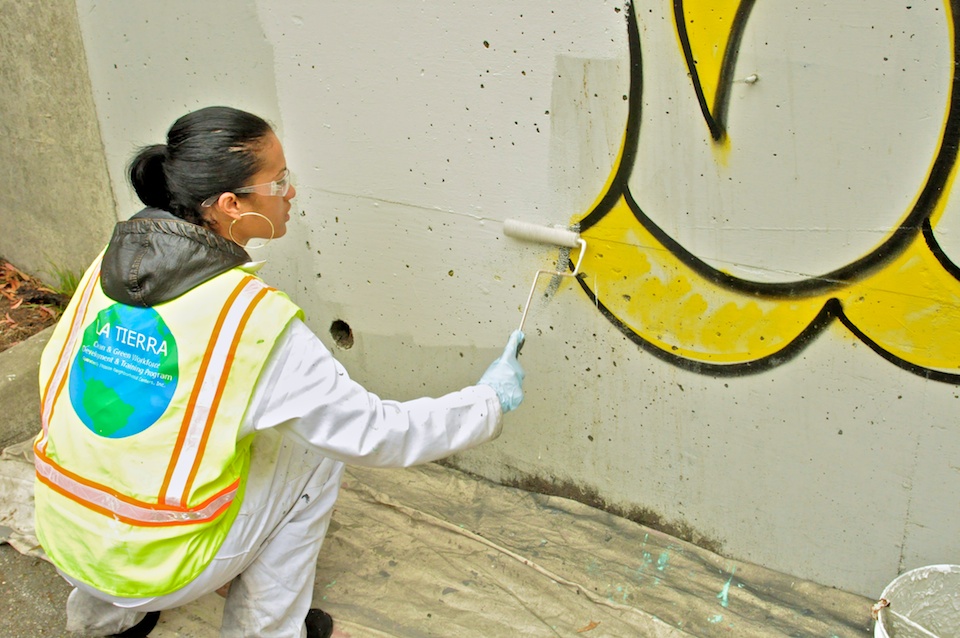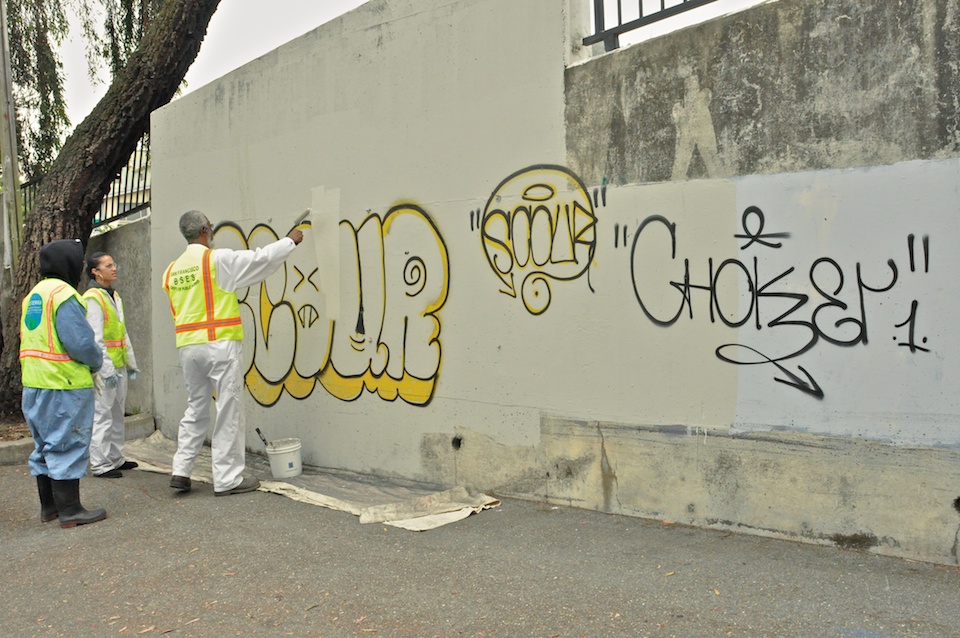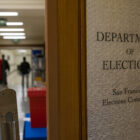The city’s ongoing battle against graffiti is finally paying off – at least for those turning in taggers.
The Department of Public Works paid out its first three $250 rewards this summer and 12 more people are waiting to cash in. The Graffiti Rewards Program works in conjunction with the district attorney’s office and the police. Those who report vandalism do not receive their rewards unless their calls lead to the conviction of the taggers. They must be willing to testify against the taggers and so cannot remain anonymous.
Anti-graffiti strategies like this program have proliferated in the past five years as the department has adopted a mix of law-enforcement and community engagement measures to reduce tagging.
City agencies as a whole spend $20 million on graffiti abatement each year. The Public Works Department spent $3.6 million on graffiti in the last fiscal year, compared with $2.9 million it spent five years ago. In 2007-2008, the department spent a peak amount of $4.2 million.
“Definitely our efforts have increased multifold,” said Mohammed Nuru, the department’s deputy director of operations and chair of the Graffiti Advisory Board. “This is one of our highest priorities.”
The pilot year of StreetSmARTS collaboration between the department and the San Francisco Arts Commission – just ended. StreetSmARTS, which recruited artists to paint murals and deter taggers, cost $150,000.
Department spokeswoman Gloria Chan said the program was successful and will receive increased funding in the next fiscal year.
The department is now organizing another anti-graffiti measure that covers similar territory: the Free Wall program, which would place blank boards in neighborhoods to provide space for legal artistic expression.
The Free Wall program remains in the discussion phase; the department is considering, for example, whether it might want the option to keep or sell some of the murals that artists create on the boards.
In the battle against graffiti, the city freely seeks out ideas from other cities. The reward fund, for example, is not unique. San Diego rewards its residents $500 for reporting graffiti. Sacramento awards between $50 and $250, depending on the scale of the reported vandalism.
Nuru described a new approach that his department has borrowed from San Jose: a tagger database with photographs of graffiti work. The database keeps track of graffiti so that the city can create profiles of taggers based on their style of work. Those photographs can be used as evidence in court against taggers, Nuru explained.
In 2009-2010, the department processed about 8,900 graffiti incidents. The average response time for graffiti clean up is 48 hours, according to Chan. Graffiti expressing gang affiliation or profanity receives abatement priority.
The past fiscal year was also the first year that the department received authorization to issue blight notices to private businesses. The department told 6,200 private property owners last year that they had 30 days to clean-up graffiti on their buildings – 700 of those owners then received blight notices because they did not abate the graffiti within 30 days. Of those 700, 369 then complied.
Nuru said that the department’s graffiti work is a response to “the people who live here who have been very upset” about graffiti.
However, he also alluded to a lack of public enthusiasm about anti-graffiti funding. “I don’t think anybody wants to be spending money cleaning graffiti,” he said. The graffiti program uses about 5 percent of the department’s operations budget.
Currently, the gas tax, fines on vandals and the city’s general fund pay for the department’s graffiti programs. However, Nuru said he would like to see a tax on graffiti supplies that are sold in some art stores – an idea that he said might be under discussion in future Graffiti Advisory Board meetings.









